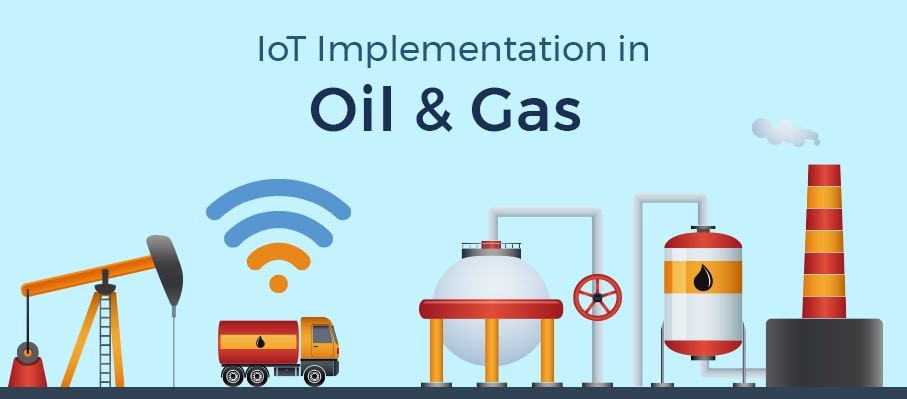
Using IoT Solutions to Solve Oil and Gas Refinery Challenges
The Oil & Gas industry faces unprecedented challenges across the entire energy system: more
competition, complexity, and regulation. Compounded by increasingly less predictability, these factors
lead to squeezed profit margins and the intensified battle for operational efficiency and asset
performance to remain competitive.
To effectively respond to these challenges, organizations need tools and processes to quickly and
efficiently manage the risks such as leaks, equipment maintenance, malfunction, and volume output.
They considerably hinder efforts to address the increasing challenges the industry faces effectively.
IoT Remote Sensors can Increase Efficiency and Mitigate Risk
Technology offers solutions to the industry’s growing pressures. Technological innovations enable operational cost reduction and a negative impact on the environment while increasing output quality. A recent study cites that leveraging digital technology in the oil field can cut operating costs by 10–25%.
Operations and automation technologies blend with sensors and the cloud to create a network of interconnected digital devices to allow real-time insight and data-driven decisions. Data-driven predictive analytics allow refineries to anticipate the future, better inform current decisions, and enable automation to benefit from cost efficiencies and speed.
How to Utilize Data from Remote Sensors to Reduce Carbon Emissions
With technology advances, the amount of digital data collected throughout the oil and gas value chain increases exponentially. Still, only a small fraction of this wealth of data is currently utilized. A McKinsey's study discovered that only 1% of the 30,000 data points gathered from remote sensors on oil and gas drilling rigs are used for operational decision making. Failure to leverage more data points presents a massive lost opportunity in the modern business environment where data drives effective decision-making. Accurately measuring carbon emissions is the first step towards reducing them. The deployment of sensors to collect and transmit data is critical in this endeavor.
The Economic Cost of Lost Commodities
Managing leaks is vital as they can lead to fires, explosions, and environmental contamination, but there is also a substantial economic value to unlock here. As the scientific and public scrutiny for environmental issues heightens, new data emerges, revealing more insights about the state of greenhouse emissions from the oil and gas industry. For example, research shows that methane emissions are about 60% higher than previously thought: a 2.3% leakage rate than the 1.4% estimate from the EPA. Instead of coming from the well to the pipeline, methane — the main component of natural gas — is escaping through faulty equipment. Estimates are that lost methane is worth $2 billion a year.
According to the International Energy Agency, the oil and gas industry can reduce its methane emissions by 75%. The value of the gas saved paying for up to two-thirds of these reductions.
How Fugitive Emissions Contribute to Air Pollution
The petroleum sector produces greenhouse gas emissions, both unintentionally (leaks or fugitive emissions) and purposely (venting). Poorly maintained or inefficiently operated equipment releases more considerable amounts of greenhouse gasses.
After carbon dioxide, methane is the second most abundant greenhouse gas emitted by human activities. Methane warms the planet 80 times as much as CO2 over the first 20 years, contributing to about 25% of global warming.
Almost a third of methane emissions in the U.S. come from the oil and gas industry. In oil production, methane is a byproduct of oil drilling, often vented unburned directly into the atmosphere, creating environmental and economic costs through the energy value of the lost gas. The Government Accountability Office estimates that approximately 40% of natural gas vented and flared on offshore federal leases could be captured with available technologies.
In the natural gas sector, methane is the product and not a byproduct. But even here, considerable amounts of the gas are emitted unintentionally through leaks or inefficient drilling practices. With natural gas production expected to grow, fugitive methane will present an increased risk to the environment and the bottom line of oil and gas companies.
Aligning Environmental and Economic Benefits: Aegex Solutions for Reducing Carbon Emissions
Novel IoT sensor and communications technologies such as Aegex NexVu sensors built for hazardous environments, managed by Aegex intrinsically safe tablet and powered by cloud computing, allow remote computational monitoring of facilities, including fugitive gas emissions. Together, they provide a single platform designed to improve refineries’ asset visibility and safety, leading to enhanced operational efficiency and profitability.
NexVu is an easy-to-operate, accurate, low-cost, low-maintenance IoT solution that allows users to deploy a fugitive emissions monitoring system in less than an hour. NexVu sensors capture facility and equipment data in real-time, monitor operations, and help the analytics algorithm detect anomalies before they escalate. Sensor data is stored on the cloud platform to power analytics, enable predictive maintenance, and alert if any deviation from the normal range of data parameters is spotted. As a purpose-built industrial device for use in the most hazardous zones of explosive environments, the Aegex intrinsically safe tablet allows remote management of the monitoring equipment and superior mobile communications on dangerous sites where traditional devices cannot be used.
